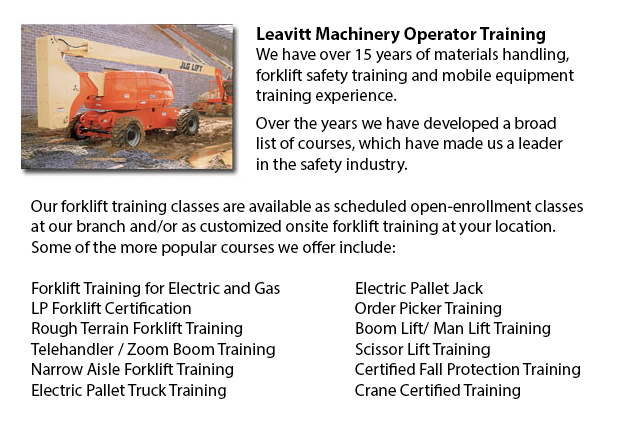
Boom Lift Safey Training Red Deer - Boom lifts are a type of elevated work platform or aerial lifting device which are normally utilized in construction, industry, and warehousing. Boom lifts can be used in practically whichever surroundings due to their versatility.
Elevated work platforms allow personnel to get into work areas which would be inaccessible otherwise. There is inherent danger in the operation of these devices. Workers who operate them have to be trained in the right operating procedures. Preventing accidents is paramount.
Boom Lift Training Programs include the safety aspects involved in boom lift operation. The program is best for individuals who operate self-propelled elevated work platforms and self-propelled boom supported elevated work platforms. Upon successful completion of the course, Those who participated will be given a certificate by an individual who is licensed to confirm the completion of a hands-on assessment.
To help train operators in the safe utilization of elevated work platforms, industry agencies, local and federal regulators, and lift manufacturers all play a role in establishing standards and providing the necessary information. The most essential ways to prevent accidents related to the use of elevated work platforms are the following: putting on safety gear, conducting site assessment and checking equipment.
Important safety considerations when operating Boom lifts:
Operators stay away from power line, observing the minimum safe approach distance (MSAD). Voltage can arc across the air to find an easy path to ground.
A telescopic boom must be retracted prior to lowering a work platform in order to maintain stability as the platform nears the ground.
Boom lift workers must tie off to guarantee their safety. The harness and lanyard contraption must be connected to manufacturer provided anchorage, and never to other wires or poles. Tying off may or may not be necessary in scissor lifts, depending on specific employer guidelines, job risks or local rules.
Avoid working on a slope that goes beyond the maximum slope rating as specified by the manufacturer. If the slop goes beyond requirements, then the equipment must be transported or winched over the slope. A grade could be measured without difficulty by laying a straight board or edge of at least 3 feet on the slope. Next a carpenter's level could be laid on the straight edge and the end raised until it is level. The percent slope is attained by measuring the distance to the ground (also called the rise) and then dividing the rise by the length of the straight edge. Afterward multiply by 100.
-
Fall Protection Ticket Red Deer
Fall Protection Ticket Red Deer - The number one reason of death in the construction industry come from fall-related incidents. There is more possibility for fall accidents depending upon the kinds of work being done in your workplace. Therefore, kno... More -
Overhead Crane Certification Red Deer
Overhead Crane Certification Red Deer - The overhead crane certification course is a course that is designed to help trainees, even if they have language or literacy limitations. The course comprises a practical hands-on training session and a classr... More -
Wheel and Track Loader Training in Red Deer
Lift trucks are obtainable in a variety of various models which have various load capacities. Nearly all typical lift trucks utilized in warehouse settings have load capacities of 1-5 tons. Bigger scale models are utilized for heavier loads, like for... More -
Heavy Equipment Certification Red Deer
Heavy Equipment Certification Red Deer - Heavy duty vehicles are big pieces of machines which are usually known as heavy equipment. It is a broad term that literally includes whatever big utility vehicle in the area of agricultural and forestry imple... More -
Heavy Equipment Operator Classes Red Deer
Heavy Equipment Operator Classes Red Deer - A person who has the correct training to be able to use a particular kind or piece of machine is referred to as an equipment operator. There are different ways that an equipment operator can become trained... More -
Forklift Training Programs Red Deer
Forklift Training Programs Red Deer - Are you searching for a job as a driver of a forklift? Our regulatory-compliant mobile equipment operator training offers instruction in kinds of lift trucks, pre-shift check, fuel types and dealing with fuels, a... More -
Crane Safety Training Red Deer
Crane Safety Training Red Deer - Both crane driver and their supervisors must know all the potential problems related to the operation of an overhead crane. All over North America, there is legislation which provides rules for the safe inspection, ma... More -
Aerial Lift Training Red Deer
Aerial Lift Training Red Deer - An aerial work platform is a mechanized access platform. This device provides access to otherwise inaccessible places for people or equipment. Likewise called an elevating work platform or aerial device, the machinery... More

Forklift Training Red Deer
TOLL FREE: 1-888-254-6157
Red Deer, Alberta
forklifttrainingreddeer.com
Email Us
About Us


